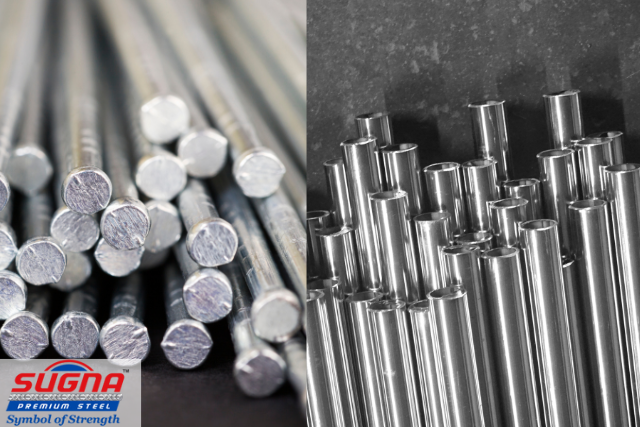The world of metallurgy is diverse and vast, featuring countless alloys and pure metals each having unique properties and applications. Two such materials commonly encountered in the industry are EN8 and mild steel. But what distinguishes them? Understanding the inherent differences between EN8 and mild steel can lead to better decision-making in areas such as manufacturing, construction, and automotive industries.
EN8 Vs Mild Steel

EN8 is a medium carbon steel, often used in applications that require a balance between toughness and strength. It is known for its impressive tensile strength and is typically used in the hardened and tempered condition.
Mild steel, on the other hand, is a low carbon steel known for its malleability, ductility, and weldability. Due to these traits, it is commonly used in various applications ranging from construction to car manufacturing.
Composition of EN8
EN8, also known as 080M40, is an unalloyed medium carbon steel. It typically contains around 0.36%-0.44% carbon, making it harder and stronger than lower carbon steels, yet maintaining a good level of ductility. This balance of properties makes EN8 a popular choice for many mechanical engineering applications.
Properties of EN8
The properties of EN8 contribute to its widespread use in various industries. Some of these properties include:
- High tensile strength: EN8 can withstand substantial loads before it begins to deform permanently. This trait is useful in applications such as axles, shafts, and gears.
- Good ductility: Despite its strength, EN8 still maintains a level of flexibility that allows it to be shaped without breaking.
- Superior hardness: The hardness of EN8 is often increased by quenching it in water or oil followed by tempering.
- Resistance to wear: EN8 exhibits excellent resistance to wear, which makes it suitable for components subjected to high mechanical stress.
Key Differences of EN8 and Mild Steel
| EN8 | Mild Steel | |
|---|---|---|
| Carbon Content | 0.36%-0.44% | Less than 0.25% |
| Tensile Strength | High | Medium |
| Ductility | Good | Excellent |
| Hardness | Harder than mild steel | Softer than EN8 |
| Weldability | Fair | Excellent |
| Cost | Generally more expensive | Generally less expensive |
| Common Applications | Axles, gears, shafts | Construction, car bodies |
| Corrosion Resistance | Similar to mild steel | Similar to EN8, but can be improved with protective coatings |
EN8 vs Mild Steel: FAQs
Why choose EN8 over mild steel?
EN8 is chosen over mild steel when higher tensile strength and hardness are needed. This makes it ideal for creating axles, gears, and shafts.
Why choose mild steel over EN8?
Mild steel’s superior weldability and ductility make it a better choice for applications where these properties are crucial, like in construction and car manufacturing.
Can EN8 and mild steel be used interchangeably?
While there might be some overlap, it is not recommended to use them interchangeably without considering the specific requirements of the application.
Which is more expensive, EN8 or mild steel?
Generally, EN8 is more expensive than mild steel due to its higher carbon content and enhanced properties.
Is EN8 harder than mild steel?
Yes, EN8 is harder than mild steel due to its higher carbon content.
Which is more resistant to corrosion, EN8 or mild steel?
Both EN8 and mild steel have similar resistance to corrosion. However, mild steel can be coated with a protective layer to increase its resistance to rust.
Conclusion
In the fascinating world of metals and alloys, EN8 and mild steel hold unique positions. Each with their characteristic strengths and potential limitations, the choice between the two is largely dependent on the specific application at hand. Understanding their properties and uses allows us to better harness their potential and open up new avenues of innovation and efficiency.

